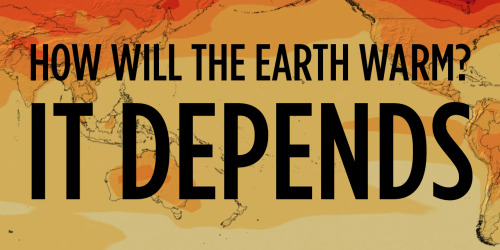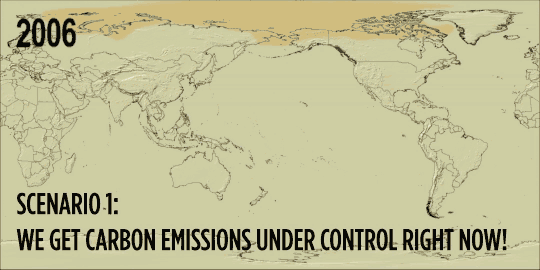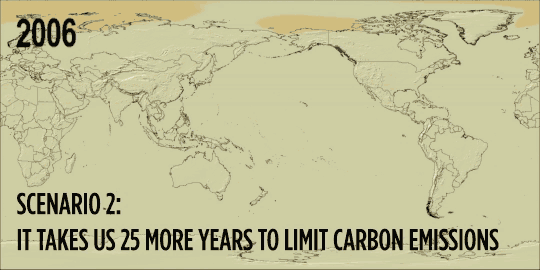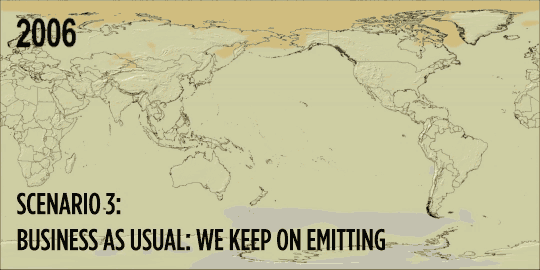Most (59%) Americans Say That Stricter Environmental Laws And Regulations Are Worth The Economic Cost,

Most (59%) Americans say that stricter environmental laws and regulations are worth the economic cost, but there is a sharp partisan divide. Democrats overwhelming (77%) favor stricter environmental laws and regulations, but only 36% of Republicans agree. But this 41-point opinion gap is relatively recent. In 1994, the gap was only 8 points. Yet over the decades views of Republican and Democratic voters have diverged, with the divergence occurring rapidly and dramatically starting around 2008.
More Posts from Envirographs and Others

Wetlands losses and gains for different land use categories. While, historically, agriculture was responsible for the vast majority of wetlands losses, government incentive programs like the Wetlands Reserve Program have encouraged farmers to restore former wetlands on their lands, contributing to a net gain of wetlands from the agriculture sector 2004-2009. In contrast, silviculture (forestry) is contributing heavily to wetlands losses, with urban and rural development also destroying wetlands. Urban and rural development combined accounted for 23 percent of the wetland losses 2004-2009, while silviculture accounted for 56% (a decrease from 1998-2004 for urban and rural development and an increase for silviculture).
*"Other" included areas such as native prairie, un-managed forests, scrub lands, barren and abandoned land, lands enrolled in conservation easements or other lands designated as wildlife management areas. Conservation programs are largely responsible for high wetlands gains from these areas.

As the Trump administration rolls back Obama’s Clean Cars program, meant to increase the fuel efficiency of American cars and light trucks, demand for electric vehicles [EV] - both battery electric (BEV) and plug-in hybrids (PHEV) - is soaring globally.
But as Brad Plumer points out, a good deal of this growth is the result of policy meant to encourage the purchase of electric vehicles and build up EV infrastructure.
As a result, electric vehicles now make up more than 1 percent of sales in China, France, Denmark, and Sweden. They make up 9.7 percent of sales in the Netherlands, and 23 percent of sales in Norway, which offers some of the most generous tax incentives around, worth about $13,500 per car.

Oyster reefs are in rough shape over much of the world, threatened by over-harvesting in combination with pressures from exotic species (including disease) and pollution. This means those coastal areas are losing the valuable ecosystem services, such as water filtration and protection from storm surges, oyster reefs provide.
Source:
Beck, M. W., Brumbaugh, R. D., Airoldi, L., Carranza, A., Coen, L. D., Crawford,
C.,…Guo, X. (2011). Oyster reefs at risk and recommendations for conservation,
restoration, and management. BioScience, 61(2), 107-116. doi:http://dx.doi.org/10.1525/bio.2011.61.2.5



Carbon dioxide emissions in the UK are falling. CO2 emission fell 5.8% in 2016 from the previous year. Current emissions represent a 36% reduction from 1990 levels, and are at their lowest level since 1894 (outside the 1920s general strikes).
Why? The decline of coal. Coal use in the UK has declined steadily from its peak in 1956, and has experienced a dramatic decline since 2012. Coal use in 2016 dropped 52% from 2015.
The reduction in coal use is a result of multiple factors. The biggest is the expanded use of natural gas and renewables displacing coal. Other factors include an overall reduction in energy demand, the closing of Redcar Steelworks in 2015, and the UK’s carbon tax.
Source




The larger the share of overall energy jobs that are solar and wind jobs, the more likely a state was to support the Democratic candidate in 2016. This has an important lesson for Trump as his administration crafts energy policy.
Per Axios:
...for the most part, states that Trump narrowly won have a higher percentage of energy jobs that are renewable-energy jobs than safe Republican states.
Thus, an energy policy that shuns renewables in favor or jobs in fossil fuels could bolster his support in solid red states, while jeopardizing his support in the swing states he narrowly won to give him the presidency. Trump would be wise to continue Obama’s investment in renewables.
![“[Electric Vehicle] Sales Have Been Soaring Worldwide. By 2025, More Than 37 Million Fully Electric](https://64.media.tumblr.com/8e325b60ea6c2233662c88dae16cca68/tumblr_om056oTBTE1rtczfso1_500.jpg)
“[Electric vehicle] sales have been soaring worldwide. By 2025, more than 37 million fully electric vehicles are expected to be on the road globally, according to Navigant Research, and those EVs will be ‘cost competitive’ without subsidies.” - ThinkProgress

Pollution-related mortality in Europe

Ongoing drought conditions have the prompted the U.S. Agriculture Department to declare a federal disaster area in more than 1,000 counties covering 26 states. That's almost one-third of all the counties in the United States, making it the largest disaster declaration ever made by the USDA. The result is skyrocketing corn, wheat and soybean prices.

Harvard political scientist Theda Skocpcol analyzed the failure of the 2009 Cap & Trade bill to determine what caused climate legislation to fail while health care reform succeeded. In her report, she claims that a major failure was that the environmental coalition focused on gaining republican support (which was reasonable, as Republicans had previously supported cap and trade, including 2008 Republican Presidential nominee John McCain), without recognizing that the environment had become a politically polarized issue, with Republicans turning against environmental legislation.
In an interview with The Washington Post's Brad Plumer, she states:
One of the things that really surprised me in my research came from pulling together scores from the [League of Conservation Voters]. And you see a clear pull on politicians from grassroots conservative opinion around 2006 and 2007. Climate-change denial had been an elite industry for a long time, but it finally penetrated down to conservative Republican identified voters around this time. That created new pressures on Republican officeholders and candidates. And I don’t think most people noticed that at the time. Even John McCain. I have this figure that shows him moving up on LCV scores for most of the last decade [i.e., casting more pro-environmental votes] and then pulling back suddenly to the lowest level starting in 2007.





As governments discuss climate change in Paris, they’ll be referring to the dire predictions of climate scientists. Here are three visualizations of possible futures based on detailed climate models and summed up by the United Nations’ Intergovernmental Panel on Climate Change (IPCC) in their 2013 report. The deeper the red - the hotter things are getting.
The message is clear: we better act fast.
How did they come up with these models? Read or listen to Nell Greenfieldboyce’s story.
Image Credit: NASA’s Scientific Visualization Studio and NASA Center for Climate Simulation
-
 envirographs reblogged this · 7 years ago
envirographs reblogged this · 7 years ago
A visual exploration of environmental problems, movements and solutions.
151 posts